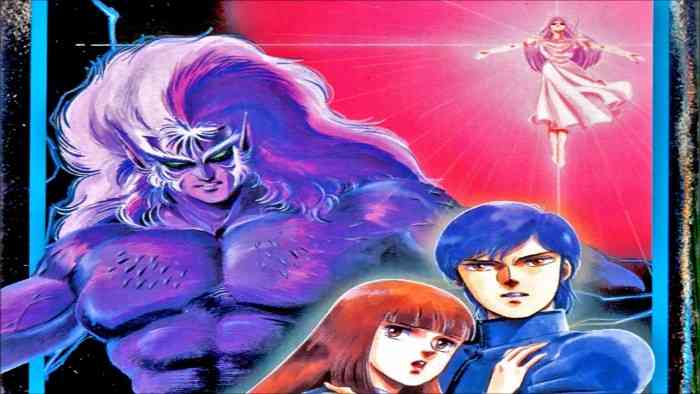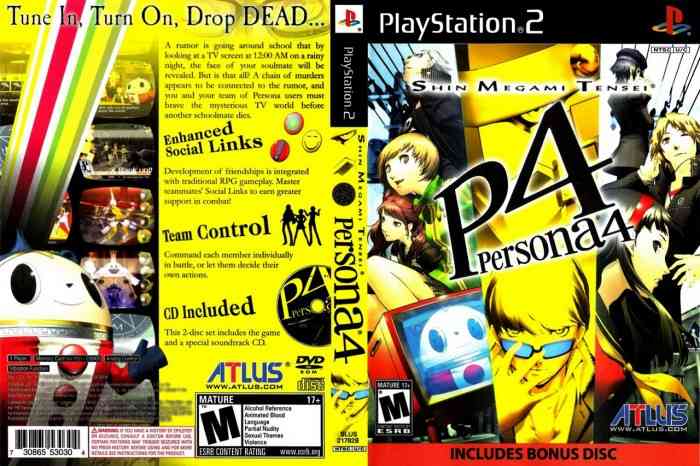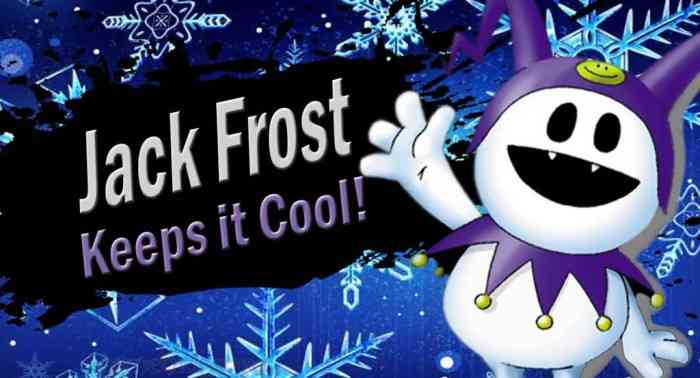A Deep Look into Persona 3 FES
If you’re just joining us now, don’t miss the first part of the series diving into Persona 3 FES. Check out ‘The Intro‘.
The Persona series is actually a spinoff series of the Megami Tensei, or MegaTen series. In Japan, it is the third most popular RPG series, after Dragon Quest and Final Fantasy, which makes it their number one RPG series not published by Square-Enix. The series was developed by Atlus, which is usually known for publishing JRPGs series on this side of the Pacific.
The first Megami Tensei entry was Digital Devil Story: Megami Tensei for the Famicom (Japanese NES) in 1987, and was originally created by Kouji Okada, Ginichiro Suzuki, and Kazunari Suzuki. Its story was based on the novel Digital Devil Story by Aya Nishitani. There was a sequel called Digital Devil Story: Megami Tensei II, released in 1990 for the Family Computer. Neither of these games, nor their SNES sequels, Shin Megami Tensei (1992) and Shin Megami Tensei II (1994) were released in North America. Like me, most North Americans weren’t introduced to the series, until the release of Shin Megami Tensei: Nocturne for the PlayStation 2 in 2004.

The stories of the Megami Tensei games are dark, and deal with demon summoning, apocalypse, and technology. They are unrelated story-wise, but linked gameplay-wise, like the Final Fantasy series. Gameplay in the first four games are first person dungeon-crawling, with demon collecting ala Pokemon. Many of the demons found in the game are based on myths and legend from around the world.
The first Megami Tensei game released in North America was actually for the Nintendo Virtua Boy in 1995. Jack Bros. is a top down action game starring the MegaTen series mascot, Jack Frost. The first Megami Tensei RPG released in North America was actually from the Persona spinoff series. Shin Megami Tensei: Persona was released in North America in 1996 as Revelations: Persona for the PS1. Shin Megami Tensei: Persona 2 was split into two parts: Shin Megami Tensei: Persona 2 – Innocent Sin (released 1999) and Shin Megami Tensei: Persona 2 – Eternal Punishment (released 2000). Sadly, only Eternal Punishment was released in North America, until 2011, when Innocent Sin was released for the PSP. And even though Persona and Persona 2 – Innocent Sin were given upgrades and better localization for PSP, Eternal Punishment was not. To play these games, you either have to make two PSP purchases and a PS1 purchase, or two PS1 purchases and a PSP purchase. Eternal Punishment is also available on the PSN.
The Persona series was not popularized in North America until 2007, when Persona 3 FES was released. It was followed by the also highly successful Persona 4 in 2008, which is similar to 3 in many ways, but fixes all of the gameplay issues it had, including the problem of the main character dying being game over, having AI-controlled characters in combat, and being unable to see what your party members have equipped when purchasing weapons and armor. The story of Persona 4 is about a midnight television program that murders its viewers, and the students who are investigating the mystery. It is also highly recommended. Although the Persona series began as a spinoff of the Megami Tensei main series, it has now surpassed it in popularity.

Beginning with Shin Megami Tensei: Nocturne, the Megami Tensei series was directed by Katsura Hashino. It’s no coincidence that the series’ success in North America began with his involvement. He was Game Designer for Nocturne and Digital Devil Saga, before directing Persona 3 FES, Persona 4, Catherine, and the forthcoming Persona 5. The Persona series didn’t appear during the PS3 generation, with both 3 and 4 being for the PS2. Catherine, released in 2011 for the PS3, was Hashino’s break from the Megami Tensei series. Although there are elements of Persona in Catherine, such as daytime story/ relationships, and nighttime gameplay, Catherine is a bizarre box stacking/ climbing puzzle game, with a heavy emphasis on story. It is also highly recommended. Persona 5 began development after the release of Catherine, and will be released for the PS3 and PS4.
As of this article being released, there are 49 games in the Megami Tensei series, 23 of which have been released in North America. I am going to highlight the games released in North America, which I have not already discussed.
Shin Megami Tensei: Nocturne is really the third release in the Shin Megami Tensei main series (or fifth release in the Megami Tensei main series). A DS game called Shin Megami Tensei: Strange Journey was released as a main series game, but was not numbered, unlike Shin Megami Tensei IV for the 3DS. These main series games stick to the hardcore dungeon-crawling roots of the originals, and focus on demon collecting. Their difficulty is immense, and they are for hardcore fans of the genre only, although they are worth struggling through for their excellent stories.
Persona 3 FES got a version for the PSP called Persona 3 Portable, which has further improvements over FES, including tweaks to the levelling system, and main character gender choice. Persona 4 got an upgrade on the PlayStation Vita called Persona 4: Golden, and it is often reviewed as the best game for the Vita, period. There are two fighting game story sequels to Persona 4 for the PS3 called Persona 4: Arena, and Persona 4: Arena Ultimax. A game was created in the style of Atlus’ Etrian Odyssey series for the 3DS starring the characters of Persona 3 FES and 4, called Persona Q: Shadow Of The Labyrinth. And a story sequel to Persona 4: Golden was released for the Vita, called Persona 4: Dancing All Night, which is actually a music rhythm game, which plays on the series’ strong music composition.

Right after the release of Shin Megami Tensei: Nocturne, a pair of games (really one game split in two) were released for the PS2 called Shin Megami Tensei: Digital Devil Saga (released in 2005). They were created on the Nocturne game engine, but designed to be more accessible, and story driven.
Although Shin Megami Tensei: Devil Summoner was released for the Sega Saturn and only in Japan, its sequel Shin Megami Tensei: Devil Summoner – Soulhackers was released for the Nintendo 3DS in North America in 2013. And its two prequels were action RPGs released for the PS2 called Shin Megami Tensei: Devil Summoner – Raidou Kuzunoha Vs. The Soulless Army (in 2006) and Shin Megami Tensei: Devil Summoner 2 – Raidou Kuzunoha Vs. King Abaddon (in 2009).
There were two turn-based strategy games released for the Nintendo DS called Shin Megami Tensei: Devil Survivor (in 2009) and Shin Megami Tensei: Devil Survivor 2 (in 2012). Remakes of both games were released for the 3DS called Shin Megami Tensei: Devil Survivor – Overclocked (in 2011) and Shin Megami Tensei: Devil Survivor 2 – Record Breaker (in 2015).
Shin Megami Tensei Online: Imagine is a free-to-play PC MMORPG, released in 2008. Its gameplay and themes are similar to the main series games.
The only entry in the Last Bible series released in North America was the first one: Revelations: The Demon Slayer (released in 1999 for the Game Boy Color). The Last Bible series are portable MegaTen games, which were designed to be more accessible, and potentially played by children.

The Devil Children/ DemiKids series was an even greater attempt by Atlus to have the Megami Tensei series appeal to child audiences, and followed the Pokemon formula of two releases per game. Unlike Pokemon, each pair of DemiKids games featured stories which followed different characters. All of the series’ releases were for the Game Boy Color or Game Boy Advance. The only game in the series to be released in North America was DemiKids: Light Version/ Dark Version, which followed the characters Jin in Light Version, and Akira in Dark Version.
Whenever these articles are released on COGconnected, they will be split up into 4 weekly parts: The Intro, The History, The Review, and The Verdict. So here ends The History of Persona 3 FES. Next week: The Review of a JRPG classic!